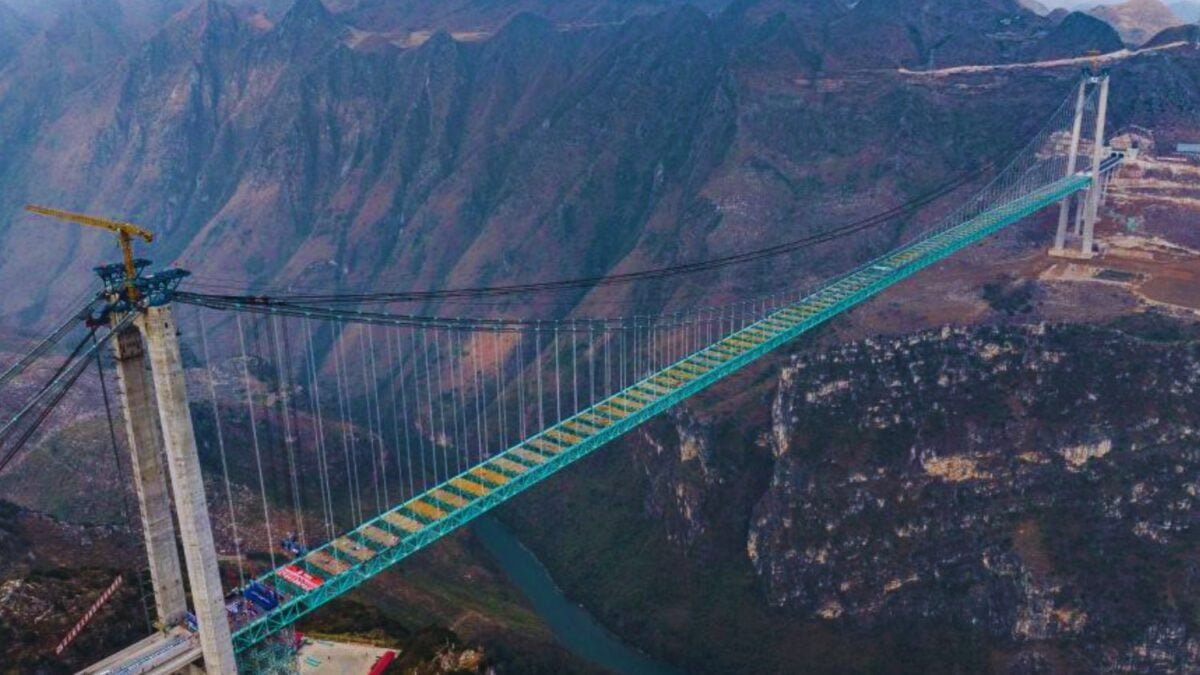China’s Sky-high Transformation: The World’s Tallest Bridge Redefines Infrastructure across the Clouds

opened a structure that not only connects two ends of a canyon: it connects human ambition with the vertigo of the impossible. In the deepest part of Guizhou province, where the valleys seem endless, a bridge has been erected that defies gravity and, at 625 meters high, it is not only a technical record, but also a message that shows power and mastery over a terrain that for centuries was synonymous with isolation.
The day a road floated between mountains

Last month, a structure that seems suspended in the air. At 625 meters high over a gorge, it immediately became the world’s tallest bridge, relegating Beipanjiang, which until now held the record at 565 meters.
Drone-captured images showed the first vehicles crossing a platform that disappeared into the clouds, while engineers, authorities, and onlookers celebrated the beginning of a new era in transportation.
From two hours to two minutes

The data that best summarizes the impact of the bridge was provided by Zhan Yin, head of the provincial Transportation Department: a journey that used to take two hours is now completed in just two minutes.
With a total length of 2,890 meters and a central span of 1,420 meters, the bridge is not only a record for its height, it is also an example of efficiency and connectivity. , isolated by gorges and deep valleys, the Huajiang is not just a bridge: it is a change in destiny.
Guizhou, land of giants
is already a living museum of modern engineering. Almost half of the world’s 100 tallest bridges are concentrated there. The new Huajiang, with its blue support towers cutting through the mist, confirms the region as the world capital of impossible structures.
The gorge on which it stands is part of a mountainous and karstic system that turns every road into a monumental challenge. And China decided to respond with a series of works that transform the landscape as much as they conquer it.
The world, in perspective

In America, the Baluarte Bicentennial Bridge in Mexico reaches between 390 and 403 meters in height, the only one on the continent in the top 10 worldwide. In Europe, the Millau Viaduct in France, with its deck 270 meters above the valley, seemed like a colossus. Today it is overshadowed by the 625 meters of the Chinese giant.
A message in the air
has been investing in seemingly impossible works for decades, and the Huajiang is the latest confirmation of that direction. An infrastructure that combines construction speed —three years— with figures that defy known limits.
But beyond the numbers, what remains is a great image: a road disappearing into the clouds, suspended over an abyss. And a country that, bridge after bridge, seems determined to demonstrate that even the most hostile mountains can be conquered by its engineering.




